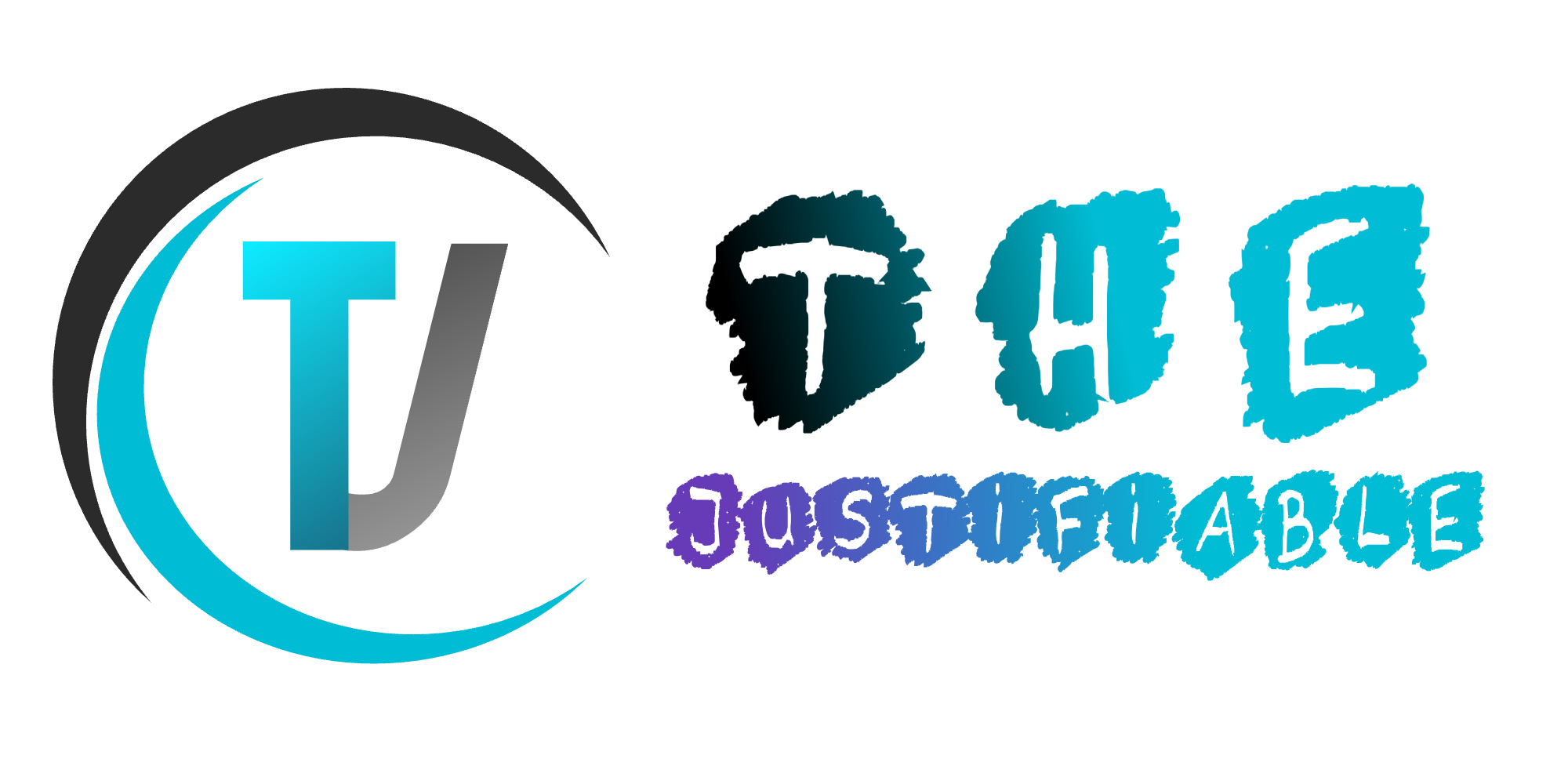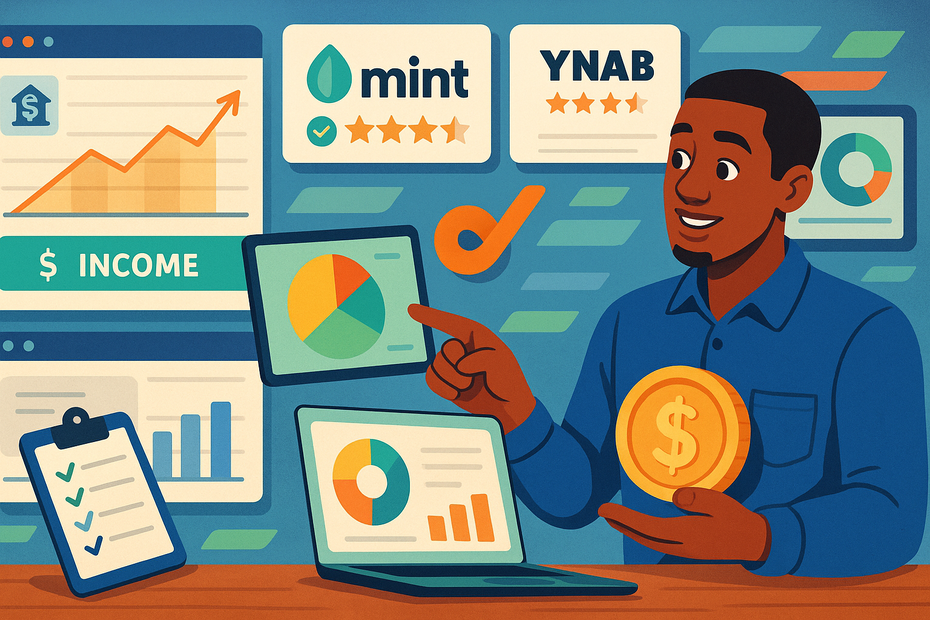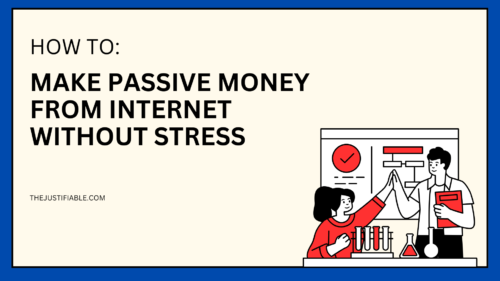Table of Contents
The best way to manage money often feels like a mystery. Should you save first or pay off debt? Do you need a strict budget or just better spending habits? How do you balance enjoying life now while planning for the future?
This guide unpacks simple, practical tricks that can help you manage your money with confidence.
Build A Simple Budget That Actually Works
A budget should feel like a tool that helps you breathe easier, not a cage that keeps you trapped. Think of it less like a punishment and more like a map that helps you reach the future you want.
Track Every Dollar Without Complicating Things
The idea of tracking every dollar might sound exhausting, but it’s one of the most eye-opening things you can do for your finances. The goal isn’t to create a spreadsheet worthy of an accountant. It’s about seeing exactly where your money goes so you can stop feeling like it vanishes every month.
Start by writing down all your expenses for just two weeks. You can do this with a notebook or a simple notes app on your phone. Every coffee, grocery trip, or late-night online order—track it. You’ll quickly see patterns, like maybe you’re spending $150 a month on takeout you didn’t even notice.
Once you know your spending habits, you can redirect money toward things that matter more. If you’d rather put $50 into savings than on food delivery, tracking gives you that power.
I suggest keeping it simple: just income minus expenses. Don’t overcomplicate it with too many categories at first.
If you like numbers, use a spreadsheet. If not, apps like PocketGuard or a simple bank app breakdown work fine. The trick is consistency, not perfection.
Choose The Right Budgeting Method For Your Lifestyle
The best way to manage money isn’t about using the “perfect” budgeting method—it’s about choosing one that actually matches your life. I believe too many people quit budgeting because they force themselves into systems that don’t fit.
For example:
- The 50/30/20 method works well if you want structure but flexibility: 50% on needs, 30% on wants, 20% to savings or debt.
- Zero-based budgeting is great if you need control: every dollar has a job, down to the last cent.
- Reverse budgeting fits people who always overspend: you save first, then spend what’s left.
The point is to test what feels natural. If you find yourself dreading your budget, you’re using the wrong method. Experiment for a month, and adjust.
Use Budgeting Apps To Make Tracking Easier
Manual tracking works, but apps save you time and headaches. I like tools that sync directly with your bank accounts, because they update in real time.
Mint, for instance, gives you an automatic breakdown of spending categories so you can see where the bulk of your money goes.
YNAB (You Need a Budget) is hands-down the best for zero-based budgeting, since it forces you to give every dollar a role.
If you want simplicity, PocketGuard keeps it minimal and shows how much you can safely spend each day without derailing your budget.
A practical tip: don’t use more than one app at a time. It just adds confusion. Pick one that feels intuitive and stick with it. If you log in daily—even for 60 seconds—you’ll naturally become more mindful.
Keep Fixed And Flexible Expenses Separate
Here’s a budgeting trick many people overlook: separate fixed expenses (rent, utilities, subscriptions) from flexible ones (food, clothes, fun). Why? Because it stops you from feeling like everything is negotiable when it isn’t.
Fixed costs should be predictable. Once you know they’re covered, you get to decide how much wiggle room you want in your flexible category.
For example, if rent, car insurance, and utilities take $1,500 out of your $3,000 monthly income, then you’ve got $1,500 left to split between food, entertainment, and savings.
I suggest keeping fixed expenses in a separate account if possible. Automate bills there, then use another account or card for flexible spending. It creates a clear boundary—you won’t “accidentally” spend grocery money on new shoes.
The magic is that once fixed costs are handled, you can enjoy flexible spending guilt-free, knowing the essentials are already secure.
Automate Your Savings To Grow Wealth Effortlessly
Automation is one of the easiest ways to stick to a savings plan. It removes willpower and discipline from the equation—you don’t need to think about it, it just happens.
Set Up Automatic Transfers To Savings Accounts
The single most effective money trick I’ve ever used is setting up automatic transfers. The day your paycheck hits, send a percentage to savings before you can spend it. Even $50 every payday adds up faster than you’d think.
Most banks let you schedule these transfers in their mobile app. For example, under “Transfers,” you can usually set it to move $100 from checking to savings every two weeks.
Treat it like a bill to your future self. The beauty is, after a few months, you stop missing that money—it becomes normal.
I suggest starting small, then increasing over time. A 5% savings rate is better than zero, and once you prove you can live without it, bump it to 10%.
Create A Separate Emergency Fund You Never Touch
If there’s one thing that prevents financial disasters from turning into debt spirals, it’s an emergency fund. This should be money you only use for real emergencies—car breakdowns, medical bills, or sudden job loss. Not vacations. Not impulse buys.
Start with $500, then aim for 3–6 months of expenses. I recommend keeping this in a separate savings account that isn’t linked to your debit card. Out of sight means out of temptation.
I’ve had moments where unexpected expenses came up—a flat tire, a vet bill—and instead of stressing or pulling out a credit card, I dipped into the emergency fund. It felt like a safety net that let me breathe. That’s the peace of mind you want.
Use High-Yield Savings Accounts For Faster Growth
Standard savings accounts often pay close to nothing in interest. High-yield savings accounts (HYSAs) are game changers because they pay rates often 10–15x higher than traditional banks.
For example, if you keep $5,000 in a HYSA earning 4% APY, you’ll earn around $200 a year—free money just for parking it there. Many online banks like Ally, Marcus, or Discover make it easy to open and manage these accounts with no fees.
One tip: don’t mix your emergency fund with your everyday savings. Open separate HYSAs for different goals—one for emergencies, one for vacations, maybe even one for a new car. This way, you’re less tempted to dip into funds meant for something important.
Save Small, Consistent Amounts Instead Of Waiting
Too many people wait for the “perfect time” to save—when they get a raise, when debt is gone, or when expenses calm down. The problem is, life never calms down.
I suggest starting with amounts so small they’re almost laughable. Five dollars a week? Perfect. That’s $260 a year without trying. Over time, you’ll naturally increase it. The habit is what matters, not the size at first.
Think of it like planting seeds. You don’t get shade from a tree the day you plant it—but in a few years, you’ll be glad you started early. With automated, consistent savings, you build financial stability without needing big windfalls.
Cut Hidden Costs That Drain Your Bank Account
Small leaks sink big ships, and hidden costs in your budget can do the same. The money you save here often feels invisible at first, but it stacks up quickly.
Identify Recurring Subscriptions You Don’t Use
Subscriptions are sneaky because they’re “set it and forget it.” Streaming, cloud storage, gym memberships—you may be paying for things you forgot you even had.
I suggest starting by pulling up your bank or credit card statement from the last three months. Circle every recurring charge. Ask yourself: do I still use this, and does it bring real value? If not, cancel it immediately.
Apps like Truebill (now Rocket Money) and Trim make this even easier. Once connected to your accounts, they highlight recurring charges and can even cancel them for you. For example, I once realized I was paying $9.99/month for an app I hadn’t opened in a year—over $120 wasted.
The point isn’t to cut everything, just the stuff you don’t value. Keep the gym if you go, but don’t pay for six streaming platforms if you only watch one.
Negotiate Bills For Internet, Insurance, And Utilities
Most people don’t realize you can negotiate recurring bills. Internet, cable, phone, and insurance companies all have retention departments that are literally trained to lower your rate if you ask.
Here’s how I do it:
- Call customer service and say, “I’ve seen better offers and I’m thinking of switching. Can you match or beat it?”
- If they push back, ask to speak to the retention team.
- Be polite but firm. Companies spend a lot more acquiring a new customer than keeping you, so they’ll usually budge.
I’ve cut my internet bill by $30/month just by making that 10-minute call. Over a year, that’s $360 saved without changing anything in my lifestyle.
Swap Expensive Habits For Affordable Alternatives
This isn’t about cutting all fun—it’s about swapping habits. Daily coffee runs at $5 each add up to $150/month. Making coffee at home might cost you $20 a month, freeing up $130 for savings or debt payoff.
Same goes for dining out. If you eat out three times a week at $30 per meal, that’s $360 a month. Swapping just one of those for a home-cooked dinner could save you over $1,200 a year.
I like to frame it as trade-offs. If you really love lattes, keep them, but cut somewhere else you care less about. That way, it never feels like deprivation—just balance.
Track And Limit Impulse Spending With Alerts
Impulse spending is where budgets often break down. One solution is setting up bank alerts. Most banks let you turn on push notifications for transactions over a certain amount. For example, you can set an alert for any charge over $50.
That little ping makes you pause and think: “Do I really want this?” It’s like having a financial accountability buddy in your pocket.
Apps like Mint also let you set spending limits by category and warn you if you’re close. If you budget $200/month for dining out and hit $180 by the 20th, you’ll know to slow down.
I’ve found this trick surprisingly powerful. Sometimes just the act of being reminded is enough to stop a purchase.
Pay Off Debt Faster Without Feeling Overwhelmed
Debt doesn’t have to feel like a mountain. With the right approach, you can chip away at it systematically and even build momentum as you go.
Use The Snowball Method To Gain Quick Wins
The snowball method focuses on paying off your smallest debts first. Once one is gone, you roll that freed-up payment into the next one.
For example:
- Credit card A: $500 balance, $50/month minimum
- Credit card B: $2,000 balance, $60/month minimum
- Credit card C: $5,000 balance, $100/month minimum
You’d pay minimums on B and C, but throw extra money at A until it’s gone. When A is paid off, take that $50 and add it to B’s $60 minimum, paying $110 until B is gone.
It works because you see progress quickly. That psychological boost keeps you motivated. I used this method to clear three small balances in a year, and it felt like gaining speed down a hill.
Try The Avalanche Method To Save On Interest
The avalanche method is the opposite: you target the debt with the highest interest rate first, regardless of balance size. This saves you more money in the long run.
Let’s say one credit card has 22% interest and another has 10%. Even if the high-interest one has a larger balance, tackling it first prevents more interest from piling up.
It’s less about motivation and more about efficiency. If you’re disciplined and motivated by math, this is the smarter option. Over years, it can save you thousands.
Consolidate Debt For Lower Interest Rates
If you’re juggling multiple high-interest debts, consolidation can simplify things and reduce interest. Personal loans or balance transfer credit cards often offer lower rates.
For example, if you move $5,000 from a 22% credit card to a 0% balance transfer card (many offer 12–18 months with no interest), you can pay down the balance much faster.
But—and this is critical—you need a repayment plan. If you don’t pay it off before the promo period ends, the high interest kicks back in.
Avoid Common Mistakes That Make Debt Worse
Two big mistakes I see often:
- Only paying minimums. This traps you in debt for years. A $5,000 balance at 18% interest takes over 20 years to clear if you only pay the minimum.
- Adding new debt while paying off old. It’s like running in place. Commit to no new debt while you’re in payoff mode.
Also avoid skipping payments. One missed payment can wreck your credit score more than the balance itself. Even if you can only pay the minimum, always pay on time.
Use Credit Cards Wisely To Build Your Credit Score
Credit cards aren’t bad—misuse is. When used strategically, they’re one of the best tools to build credit and earn rewards without costing you a dime.
Pay Balances In Full To Avoid Interest Charges
The golden rule: never carry a balance you can’t pay off in full. Credit card interest rates are brutal, often 20% or higher. If you pay the statement balance each month, you avoid all interest charges while still building credit.
I recommend setting up autopay for at least the minimum, then paying the rest manually before the due date. That way, you’ll never miss a payment.
Take Advantage Of Rewards Without Overspending
Rewards are only valuable if you’re spending money you already planned to spend. If you overspend just to earn points, you’re losing.
Here’s how I approach it:
- Use one cash-back card for everyday purchases (groceries, gas, utilities).
- Use a travel rewards card for planned trips.
One year, I earned a free round-trip flight just from charging expenses I would’ve paid in cash anyway. That’s how rewards should work—benefits without extra spending.
Keep Utilization Low To Protect Your Credit Health
Credit utilization—how much of your available credit you’re using—is a huge factor in your score. Aim to keep it below 30%, but under 10% is even better.
Example: if your limit is $5,000, try not to let your balance go over $1,500. Paying multiple times a month can help keep balances low when reported to the credit bureaus.
I personally pay my cards weekly. It keeps utilization low and prevents big balances from creeping up.
Check Your Credit Report Regularly For Errors
Your credit report is like your financial report card, and mistakes happen more often than you think. An error—like a payment marked late when you actually paid on time—can drag your score down.
You’re entitled to a free credit report annually from each of the three major bureaus (Experian, Equifax, TransUnion) through AnnualCreditReport.com. I suggest checking one every four months, so you’re monitoring year-round.
If you spot an error, dispute it directly with the bureau. I’ve done this before, and within 30 days, the issue was corrected. That small effort can bump your score significantly.
Invest Early To Let Compound Growth Work For You
The earlier you start investing, the less money you actually have to contribute over your lifetime. That’s the magic of compounding: your money earns interest, and then that interest earns interest.
Start With Index Funds For Simplicity And Safety
If investing feels intimidating, index funds are a great place to begin. Instead of trying to pick winning stocks, you’re buying a basket that mirrors the whole market. It’s like putting your money in a boat that rises with the tide.
For example, the S&P 500 index fund tracks the 500 largest U.S. companies. Historically, it’s returned around 8–10% annually over the long term. With index funds, you don’t need to obsess over stock charts or financial news.
Most brokerages—like Vanguard, Fidelity, or Schwab—make it easy. From the dashboard, you just search “S&P 500 Index Fund” and click “Buy.” I recommend starting with a small automatic contribution, even $50 a month. That habit is far more powerful than a one-time lump sum.
Open A Retirement Account Like 401(k) Or IRA
Tax-advantaged retirement accounts are the smartest way to invest. A 401(k), often offered by employers, lets you contribute pre-tax income, reducing today’s taxes while saving for tomorrow.
If your employer matches contributions—say 3% of your salary—take full advantage. That’s free money. Not doing so is like walking past a $100 bill lying on the ground.
If you don’t have a 401(k), open an IRA (Individual Retirement Account). You can do this directly through an online brokerage. With Roth IRAs, you contribute after-tax money but withdraw tax-free later. That’s a powerful deal if you expect to be in a higher tax bracket when you retire.
Reinvest Dividends To Accelerate Growth
Dividends are the payments companies make to shareholders. Instead of pocketing that cash, reinvest it. This is where compounding goes into turbo mode.
Let’s say you own shares in an index fund that pays out dividends quarterly. By reinvesting, those dividends buy more shares, which then generate more dividends. Over 20–30 years, the snowball effect is staggering.
Most brokerages let you check a simple box: “Reinvest Dividends Automatically.” I advise turning this on from the start so you never have to think about it again.
Understand Risk Tolerance Before Choosing Investments
Not all investments are created equal. Stocks generally offer higher returns but come with more ups and downs. Bonds are steadier but grow slower.
I suggest asking yourself: how would you feel if your investments dropped 20% tomorrow? If the thought makes you panic, lean more toward bonds or balanced funds. If you’d see it as a chance to buy more at a discount, you can handle more stock exposure.
Many brokerages offer “risk tolerance quizzes” that suggest allocations (e.g., 80% stocks, 20% bonds). Don’t ignore your gut. The best portfolio is one you can actually stick with, even during rocky times.
Plan Big Purchases Instead Of Acting On Impulse
Impulse buys feel good in the moment but often bring regret later. Planning big purchases gives you time to prepare financially and mentally.
Use A Sinking Fund To Save For Major Expenses
A sinking fund is a separate savings bucket for specific big goals—like a vacation, a new car, or holiday gifts. Instead of scrambling or putting it on a credit card, you save gradually.
For example, if you want a $1,200 vacation in 12 months, set aside $100 each month. Most banks let you create multiple labeled savings accounts. Name one “Vacation Fund” and schedule automatic transfers. Watching it grow builds excitement instead of stress.
Compare Prices And Timing For Best Deals
The same purchase can cost wildly different amounts depending on when and where you buy. Big-ticket items like appliances or electronics often go on sale around holidays like Black Friday or Memorial Day.
I’ve saved hundreds by waiting for seasonal sales. Use price-tracking tools like Honey or CamelCamelCamel for Amazon. They show price history so you can tell if a “deal” is actually a deal.
The rule here is simple: don’t rush. Taking a few weeks to compare can save you hundreds.
Delay Purchases To Test If You Really Want Them
I use what I call the “30-day rule.” If I want something expensive, I write it down with today’s date and revisit it in 30 days.
Nine times out of ten, the urge fades and I’m glad I didn’t buy it. But if I still want it after a month, I know it’s worth the money. This works especially well for impulse-prone categories like gadgets, shoes, or home décor.
You can even build this into apps—some budgeting tools let you tag “wants” and review them later before approving the purchase.
Prioritize Value Over Short-Term Gratification
Not all purchases are bad. Some are worth spending extra on because they last longer or improve your daily life. For example, a high-quality mattress is expensive upfront but pays off with years of better sleep.
I recommend asking: does this purchase give me long-term value, or just short-term satisfaction? It reframes spending decisions and makes you more intentional.
Create A Money Routine You Can Stick To Long-Term
Money management isn’t a one-time project—it’s a routine. Think of it like brushing your teeth. Small, regular actions prevent big problems later.
Schedule A Weekly Money Check-In With Yourself
Every week, set aside 15–20 minutes to review your accounts. Look at your checking, savings, credit cards, and any upcoming bills.
I usually do this Sunday evenings. It helps me reset before the week starts. During the check-in, I ask myself:
- Did I stay within budget last week?
- Are any bills coming up?
- Do I need to adjust spending?
Keeping this rhythm prevents surprises.
Set Short-Term And Long-Term Financial Goals
Goals give your money direction. Short-term goals might be paying off a $500 credit card balance. Long-term goals could be saving for a down payment or retirement.
Write them down and review them during your weekly check-in. I’ve found that even small wins—like hitting a $200 savings target—build momentum.
Pro tip: break long-term goals into bite-sized milestones so they feel achievable. Instead of “Save $50,000 for a house,” try “Save $5,000 for a down payment fund.”
Use Visual Progress Trackers To Stay Motivated
Numbers on a screen can feel abstract. I like using visual trackers, like coloring in a chart as I hit savings goals. Some apps even let you set progress bars for each goal.
For example, YNAB shows colorful goal meters that fill up as you contribute. It sounds simple, but watching progress grow makes saving addictive in the best way.
Celebrate Small Wins To Keep Momentum Going
Money routines stick when they feel rewarding. Celebrate wins, even small ones. Paid off a credit card? Treat yourself to a nice dinner (budgeted, of course). Hit a savings goal? Mark the moment in a journal.
This isn’t about blowing money—it’s about acknowledging progress. I believe celebrating makes you more likely to keep going instead of burning out.






